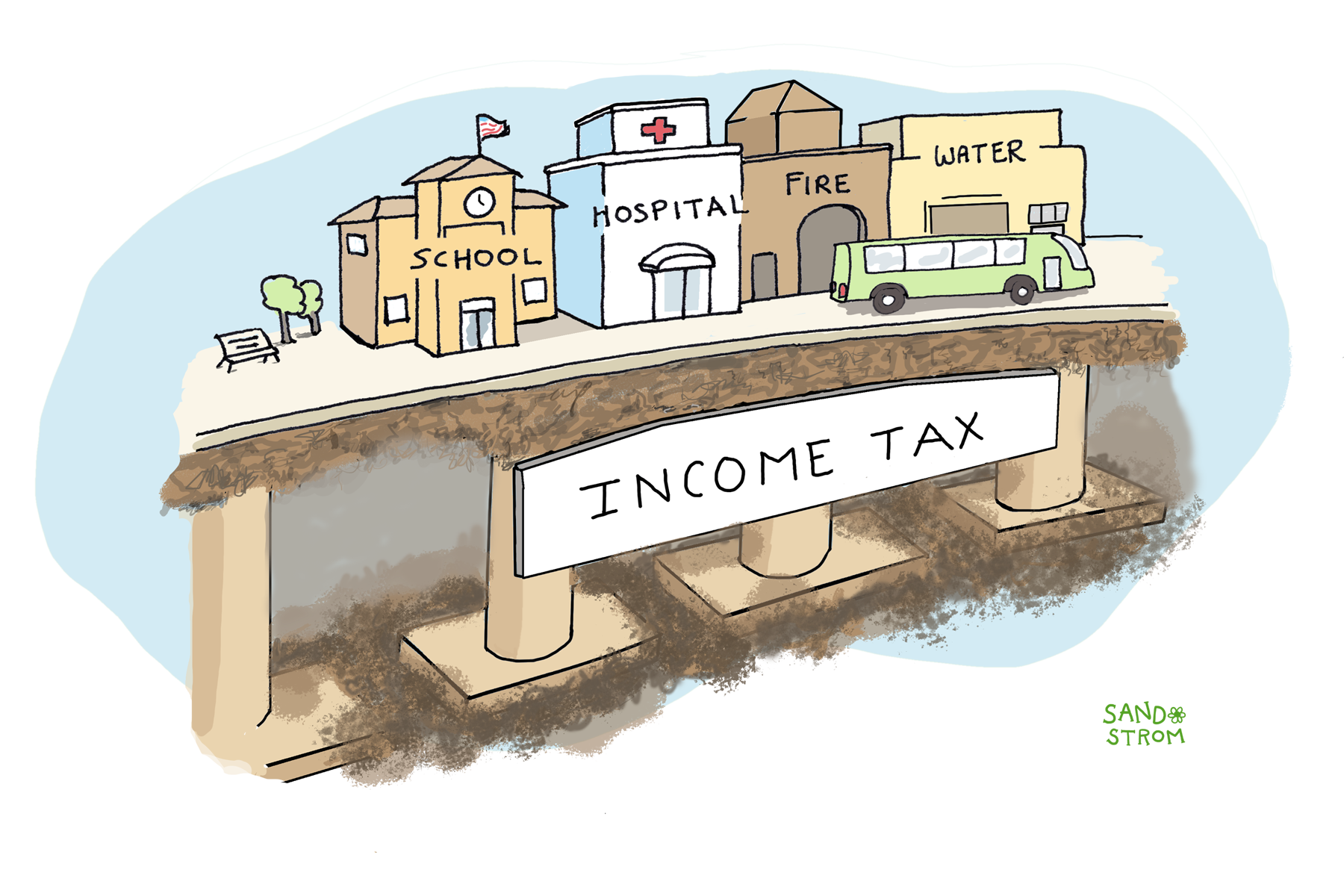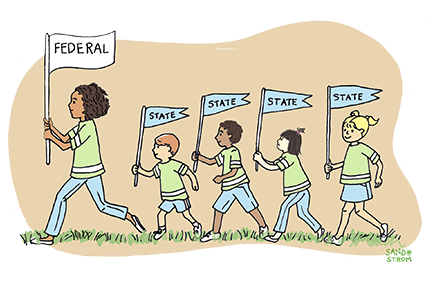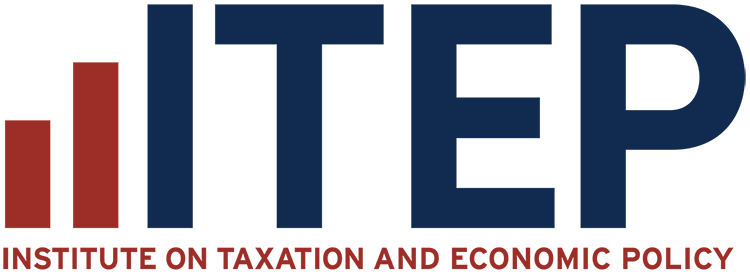State-level Earned Income Tax Credits and Child Tax Credits help workers and families make ends meet by reducing their taxes and providing refunds.
Research shows these credits are very effective at reducing poverty and creating more equitable tax systems.
The federal government also offers an EITC and a CTC. The state versions have some of the same rules as the federal credits, but often are augmented to address the federal credits’ shortcomings.  State Earned Income Tax Credits (EITCs) support low and moderate-income people who have earnings from work at some point during the tax year. Most of the benefits go to families with children, but workers without children also benefit. State Child Tax Credits (CTCs) provide financial support for children, typically including all children regardless of their parents or guardians’ earnings up to specified income levels. Some states also offer refundable Child and Dependent Care Tax Credits (CDCTCs), which help partially offset the costs of care for children or adult dependents while family members work or look for employment.
State Earned Income Tax Credits (EITCs) support low and moderate-income people who have earnings from work at some point during the tax year. Most of the benefits go to families with children, but workers without children also benefit. State Child Tax Credits (CTCs) provide financial support for children, typically including all children regardless of their parents or guardians’ earnings up to specified income levels. Some states also offer refundable Child and Dependent Care Tax Credits (CDCTCs), which help partially offset the costs of care for children or adult dependents while family members work or look for employment.
Why Refundability Matters
For tax credits aimed at workers and families, refundability is very important. The value of a non-refundable credit is limited to a family’s pre-credit state income tax liability. With a refundable tax credit, by contrast, if the credit amount exceeds what a family owes in income taxes, it receives the difference as a refund, thereby offsetting other taxes that fall more heavily on middle- and low-income families.
- Reaching those who need it most: Without refundability, families with very low incomes who owe little or no income tax cannot benefit fully from the credits, despite often facing the greatest financial challenges.
- Offsetting regressive taxes: Low-income families typically pay a higher percentage of their income in sales, excise, and property taxes than wealthier households. Refundable credits help offset these regressive taxes.
- Greater impact on poverty reduction: Research consistently shows that refundable credits are much more effective at reducing poverty than non-refundable alternatives.
How State EITCs Work
Most state EITCs are modeled directly on the federal EITC. They are typically calculated as a percentage of the federal credit; for 2025, the percentage ranges from 5 percent in Oklahoma and Louisiana to 85 percent in the District of Columbia. For example, a worker eligible for a $3,000 federal EITC in a state with a 30 percent EITC would receive an additional $900 state credit. Only families with earnings can claim an EITC. As a family’s earnings rise, the EITC amount increases, then plateaus and gradually phases out as income increases further. This design encourages and rewards work while providing significant support to those with moderate incomes.
- Credit size: States determine how generous their credit will be as a percentage of the federal EITC, or by their own design.
- Refundability: While most state EITCs (25 states) are fully refundable, some are partially refundable or non-refundable.
- Eligibility expansions: Some states have expanded eligibility beyond federal parameters:
- Ten states plus the District of Columbia have extended EITC benefits to immigrant workers who file taxes using Individual Taxpayer Identification Numbers (ITINs).
- Eight states have expanded age eligibility to include younger workers (often ages 18-24) and sometimes older workers (65+) without dependent children in the home.
- Several states provide higher credits than the federal government does to workers without dependent children in the home.
How State Child Tax Credits Work
State CTCs provide financial support specifically to families with children. Unlike state EITCs, which are mostly percentage matches of the federal credit, state CTCs often have their own unique structures.
- Credit amount: Most state CTCs provide a flat amount per child, though some vary the amount based on the child’s age (often providing more for younger children).
- Refundability: Eleven states have fully refundable CTCs, while several more offer non-refundable credits.
- Phase-out structure: Most state CTCs gradually reduce as income rises above certain thresholds, with different phase-out ranges than the federal credit.
- Age eligibility: States vary in their age requirements, with some focusing on young children (under 6) while others cover children of all ages.
- ITIN inclusion: Most states allow families filing taxes with ITINs to claim the credit, making them more immigrant inclusive than the federal CTC.
The impact of state refundable tax credits extends beyond reducing taxes.
- Poverty reduction: State credits, when refundable, can significantly reduce poverty rates. When combined with federal credits, they can lift millions of people above the poverty line.
- Improved child outcomes: Children in families receiving these credits show better health outcomes, higher educational achievement, increased future earnings, and greater economic security as adults.
- Economic stability: The credits help families meet basic needs, avoid hardship, and build financial security.
- Reduced inequality: By providing targeted support to lower-income households these credits help reduce economic and racial disparities for children who have historically been left behind by state and federal tax policies.
Local and Territorial Tax Credits
In addition to state-level credits, some localities have created their own tax credits. For example, New York City, Montgomery County (Maryland), and San Francisco offer local EITCs that supplement both federal and state credits. These local credits provide additional support tailored to the higher cost of living in these areas. Puerto Rico also has an EITC.
Related Entries

How Do State and Local Personal Income Taxes Work?
The personal income tax helps fund public education, health care, public safety and other public services provided by state and local governments. If well-designed , it is the fairest major revenue source available to states because it is levied broadly across the economy while protecting the poorest households.

How Does Federal-State Tax Conformity Work?
Most states use the federal tax code as a starting point for their calculations of state personal income taxes, corporate income taxes, and estate taxes. Changes to the federal code and federal tax administration have the potential to affect state tax systems enormously, but to some extent states can pick and choose which of those federal changes to accept.
Learn More
- Butkus, Neva. “State Child Tax Credits Boosted Financial Security for Families and Children in 2024.” ITEP, 2024.
- Butkus, Neva. “State Earned Income Tax Credits Support Families and Workers in 2024.” ITEP, 2024.
- Das, Kamolika, Andrew Boardman, and Galen Hendricks (2023). “Local Earned Income Tax Credits: How Localities Are Boosting Economic Security and Advancing Equity with EITCs.” ITEP.
- Davis, Aidan et al (2022). “State Child Tax Credits and Child Poverty: A 50-State Analysis.” ITEP and the Center on Poverty and Social Policy at Columbia University.
- Davis, Carl and Marco Guzman. “State Income Taxes and Racial Equity: Narrowing Racial Income and Wealth Gaps with State Personal Income Taxes.” ITEP, 2021.
- Waxman, Samantha and Iris Hinh. “States Can Enact or Expand Child Tax Credits and Earned Income Tax Credits to Build Equitable, Inclusive Communities and Economies.” Center on Budget and Policy Priorities, 2023.
- Waxman, Samantha, Arloc Sherman, and Kris Cox. “Income Support Associated With Improved Health Outcomes for Children, Many Studies Show.” Center on Budget and Policy Priorities. (2021)

